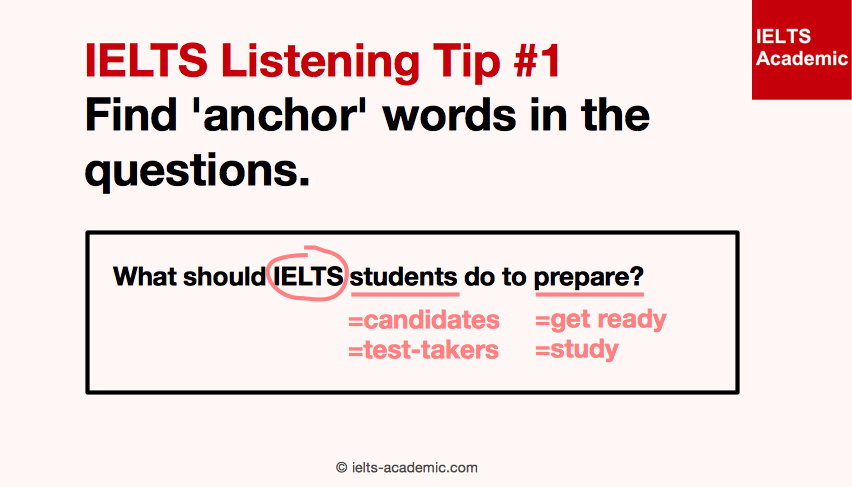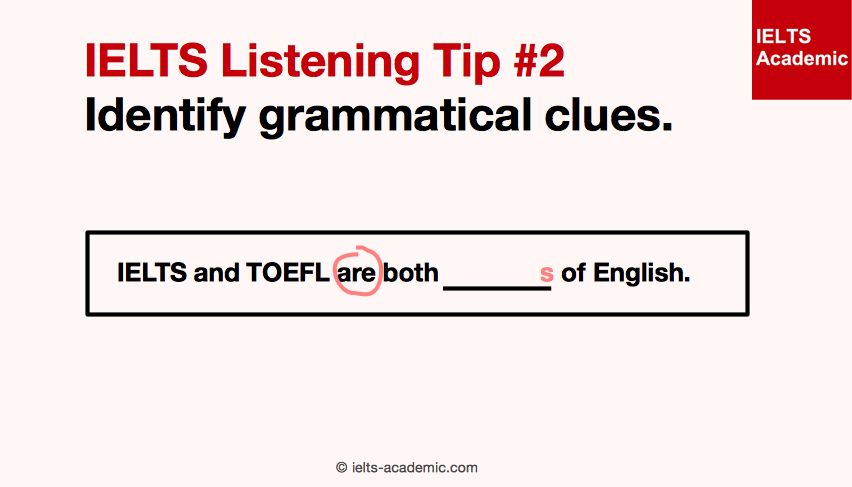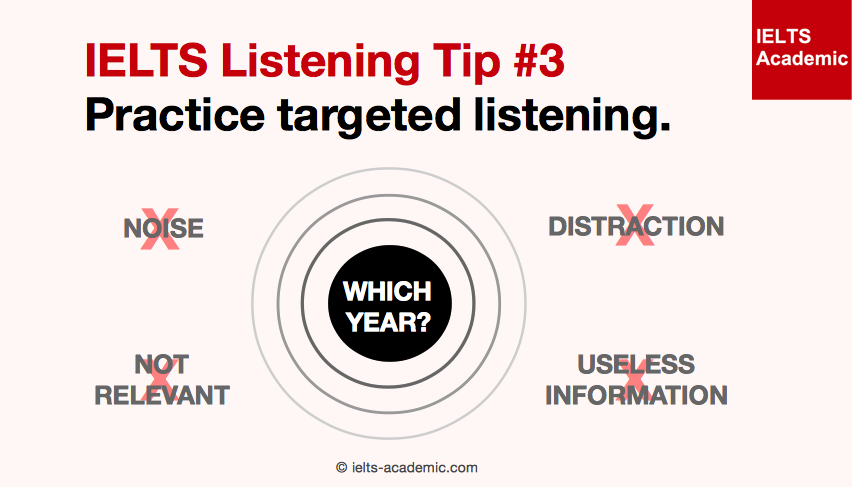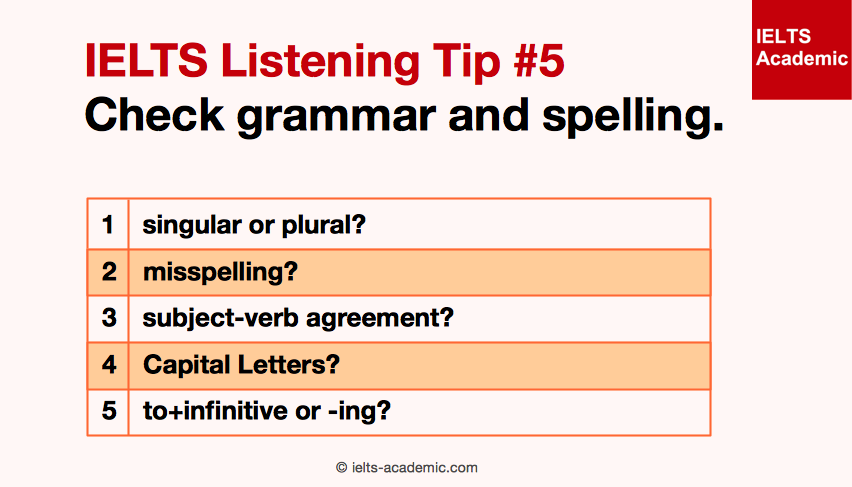Listening may be the easiest IELTS module in which to improve your score.
Why is this? Because in IELTS Listening there are clear strategies which can be learned and practiced in just a few hours.
That word practice is key, of course. The British Council website offers a full IELTS Listening practice test, as will any good IELTS textbook. In this post, I focus on the key techniques or strategies that will help you improve your score.
In the IELTS Listening module, you will hear four passages, each lasting around five minutes. While listening to each passage, you must answer ten questions. There is time at the end of the test to transfer your answers to the answer sheet.
This post assumes you are familiar with the IELTS Listening test format. If you aren't, read IELTS Listening: Introduction first.

IELTS Listening Tip 1: Find ‘anchor’ words in the questions
My first IELTS Listening tip is all about good preparation. Skim the questions before you listen and pay special attention to ‘anchor’ words. These are usually nouns and often names of people or places. Not only do anchor words help you to predict the content of the passage, they also help you navigate through the test. Names of people and places will definitely be mentioned by the speaker so you can listen for them and avoid getting lost. Other words may be paraphrased by the speaker, so you cannot depend on them quite so much.

IELTS Listening Tip 2: Identify grammatical clues
This is something you can do before and while listening. Particularly in sentence completion tasks, pay careful attention to the grammatical form of the sentence. You may have to change the speaker’s words in order to fit the question. A good example of this is when the speaker uses a to+infinitive form (‘to agree’) but the question requires an -ing form (‘agreeing’) or even a noun (‘agreement’). Also, check if the verb is singular or plural, as it can be difficult to catch the plural ‘s’ at the end of a noun while listening.

IELTS Listening Tip 3: Practice targeted listening
This is arguably the most important skill of all in IELTS Listening. Targeted listening is what you do when you listen for certain information, rather than to what someone is saying. My favourite example is in a train station. When you hear all those public announcements, do you listen to each one carefully? No, you probably listen only for the name of your destination. When a friend is telling you a story, you practice open listening to understand what it is all about. In IELTS Listening, read the questions first to discover what it is all about, and then use targeted listening to catch those ten important pieces of information.

IELTS Listening Tip 4: Skip the question if you don't hear the answer
One of the biggest dangers in IELTS Listening, or any listening test, is distraction. The thing most likely to distract us is a difficult question. What did he say? It’s too late - focus on the next question instead as that will likely be easier. Remember, in IELTS Listening you only need 30 correct answers out of 40 to get Band 7, which is a good score. So don’t miss several questions, just because you didn’t hear the answer to one. Of course, you can still guess the answer, but that can be done after the Listening section ends.

IELTS Listening Tip 5: Check grammar and spelling
My final IELTS Listening tip is also the easiest to forget. That’s because the listening passages have ended, you’re tired, and you just want it to be over. However, please check again that your answers are spelled correctly, fit grammatically, and do not exceed the word limit. As you saw in IELTS Listening Tip #2, some questions require you to change the speaker’s words to fit a sentence in the question. An IELTS examiner can forgive very tiny errors of grammar or spelling, but you certainly don’t want to take that chance.
 These are the IELTS Listening tips I always give my own students. I hope they help you get the Listening score you deserve. Don’t forget that there are other articles on IELTS Listening on this website, as well as opportunities for further practice. Read more»
These are the IELTS Listening tips I always give my own students. I hope they help you get the Listening score you deserve. Don’t forget that there are other articles on IELTS Listening on this website, as well as opportunities for further practice. Read more»